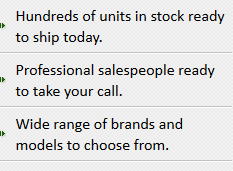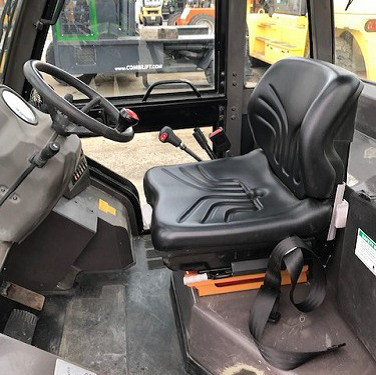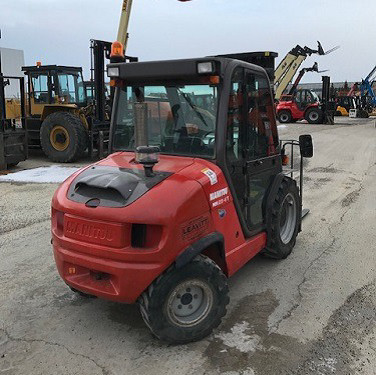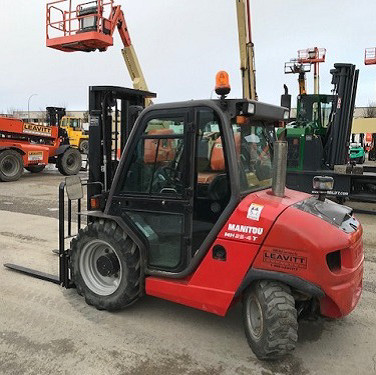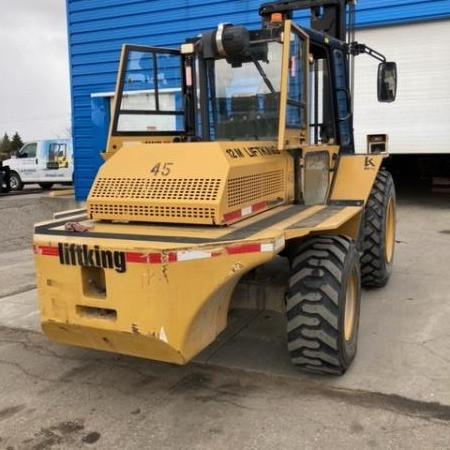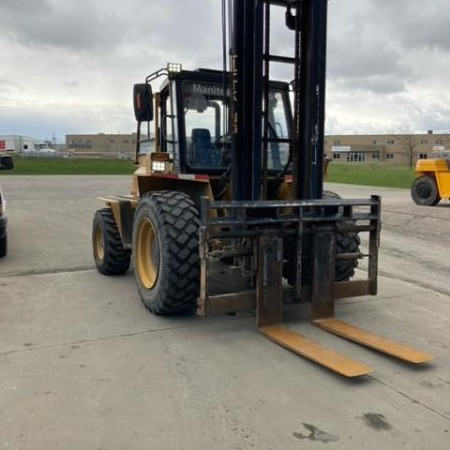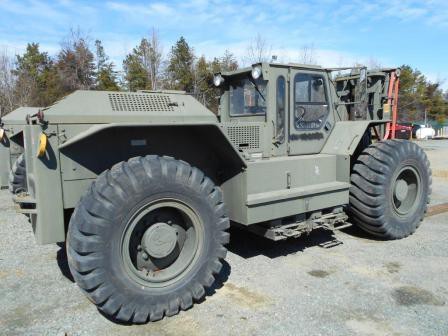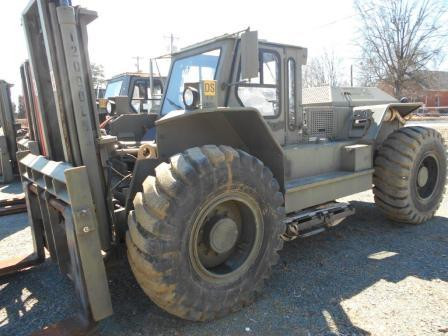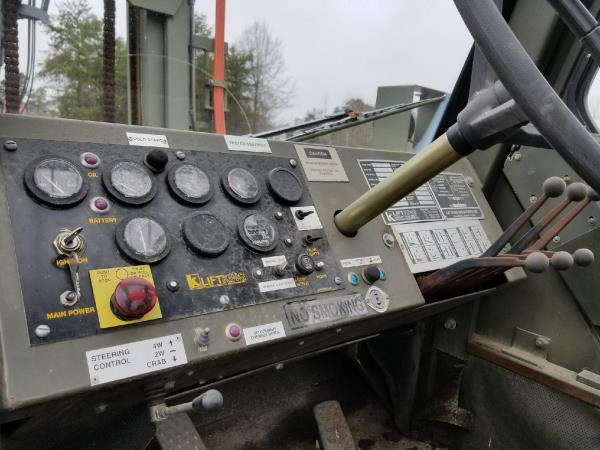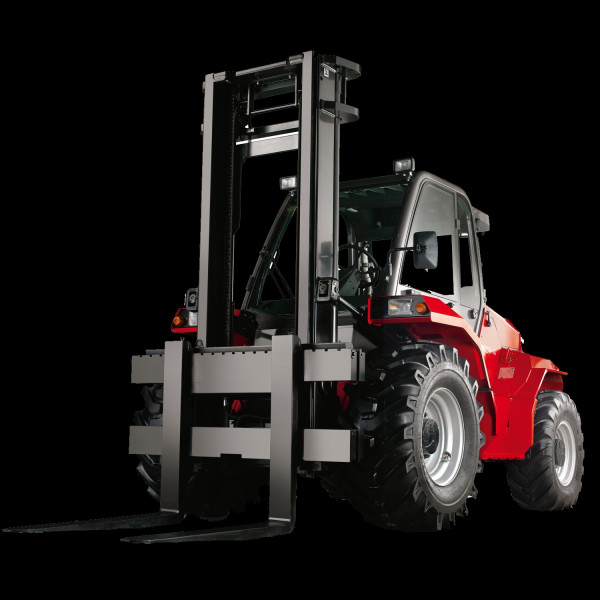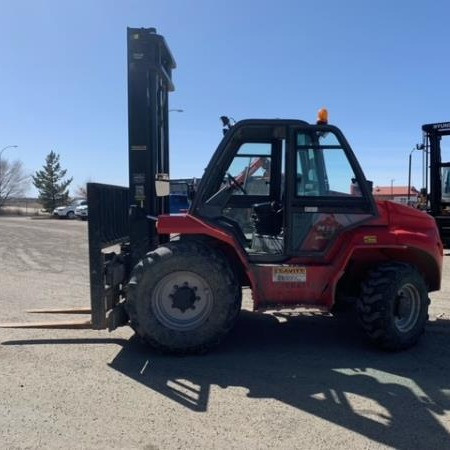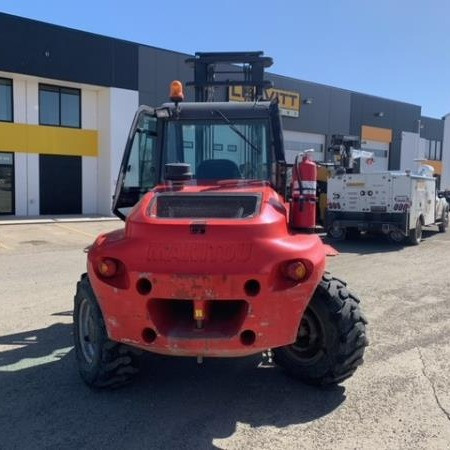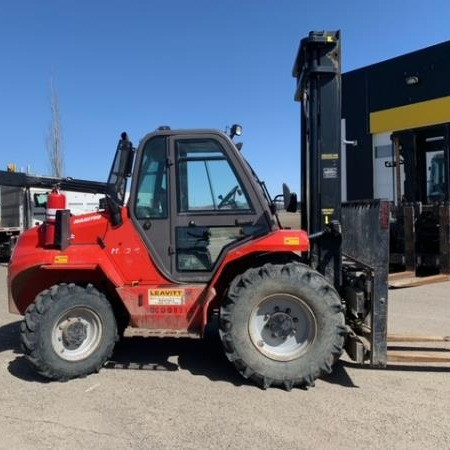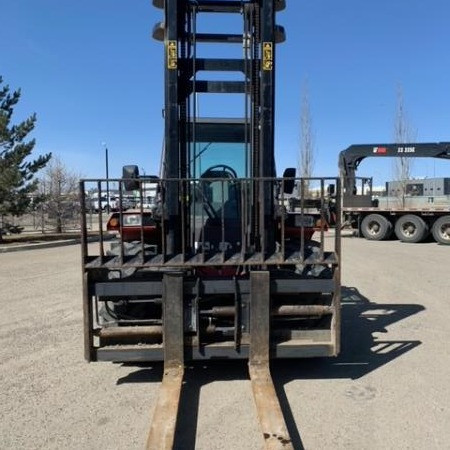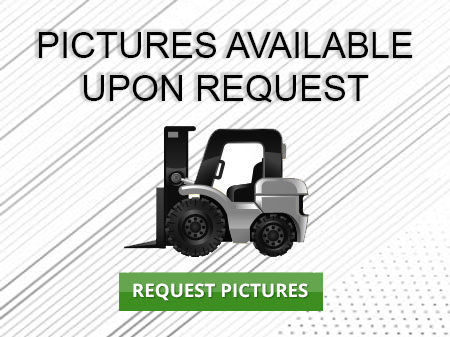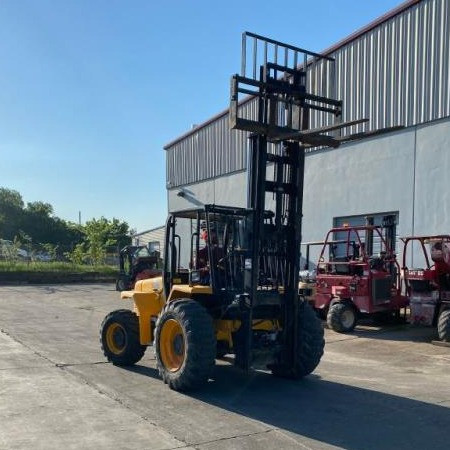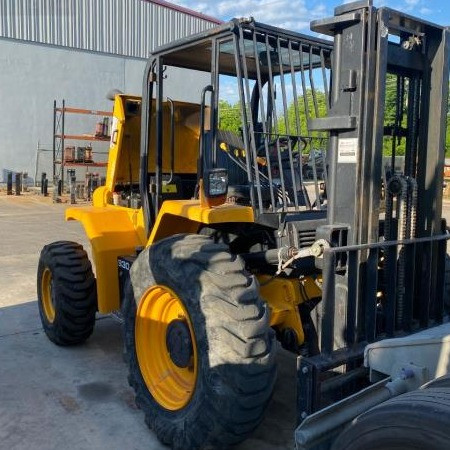Rough Terrain Forklift Garden Grove
Used Rough Terrain Forklift Garden Grove - Forklift trucks utilize two forks to transport pallets and load and unload cargo. The two main categories of forklifts are industrial forklift and rough terrain forklift.
Industrial forklifts are mainly used in loading docks and warehouse applications with smooth and level surfaces. Ideal for uneven terrain and rocky locations, rough terrain forklifts travel well in difficult environments. Rough terrain forklifts are often seen at construction sites and outdoors. They have the weight capacity, size and tires to handle heavy loads. The main difference between rough terrain and industrial forklifts is the cushion tires that are on industrial forklift models. Rough terrain models rely on pneumatic tires, a kind of tractor tire known for better floatation and traction abilities. Industrial forklifts are commonly powered by internal combustion engines although a fuel cell or battery electrical source may be used. Internal combustion engines are mainly used by rough terrain units.
Types of Class 7 Rough Terrain Forklift Trucks
There are three main types of Class 7 Rough Terrain Forklift Trucks:
1. Straight mast forklifts;
2. Telehandler forklifts; and
3. Rotating telehandler forklifts.
Rough terrain forklifts function well in treacherous locations that are often found in construction sites and military settings. The rough terrain models travel and perform well in difficult locations. In the case of rough terrain forklift operations, extra consideration must be given while raising loads in these rough, variable conditions to prevent tip-over. For safety reasons, it is vital the forklift maintains stability before moving, lifting or lowering. Stability of ground and knowledge of proper lifting technique is essential for safe operation of rough terrain forklifts.
Straight Mast Forklifts
Straight mast forklifts are designed to transport building materials around a range of rough terrain sites such as demolition and construction sites. Pneumatic cushion tires allow this forklift better maneuverability and accessibility around difficult terrain. Uneven ground and rough surfaces are no match for pneumatic tires. It is common for straight mast forklifts to come with 2-wheel or 4-wheel drive. Most straight mast forklifts are powered by diesel or propane fuel, allowing them to be used indoors for short periods but are more suited to outdoor applications. Both standard and straight mast forklifts offer similar lifting capacities weighing from 5000 to 36,000 pounds, depending on the model.
Telehandler or Telescopic Handler Forklifts
Telehandler or telescopic handler forklift trucks are equipped with a telescoping boom, giving them their name. Telescoping booms are handy for allowing the machine to load and place items at different lift heights and distances in front of the forklift. The reachability of the forklift provides the operator with greater flexibility when placing a load.
Standard telehandler forklift units are long and low. They are designed with two wheels located at the front of the forklift with a different pair of wheels found close to the end of the unit. The telescopic boom can be found at the back of the forklift, mounted on a pivot that is attached many feet higher than the frame of the unit. The fuel tank and hydraulic fluid tank are found opposite to the forklifts’ cab that is typically mounted on the left side. Along the center of the machine, the engine and transmission can be found inside the frame. This common configuration allows for a balanced forklift which is necessary for the basic stability of the machine which lifting, transporting and lowering loads.
Compared to standard forklifts, telehandlers deliver higher lift heights. High-reach telehandlers can extend their full load capacity to 56 feet. The compact telehandlers can extend their full load capacity from 18 feet. Their load capacities usually range between 5,500 and 12,000 pounds.
All-terrain forklifts often include all-wheel steering which allows for greater maneuverability. The power-shift transmission and steering features allow the operator to move the forklift into a safe and successful working proximity.
The latest telehandler models feature ergonomic upgrades for ultimate operator comfort. Spacious cabs and tilted steering are some of the items redesigned for the ultimate comfort and productive features. These ergonomic upgrades have been shown to lessen repetitive stress injuries and lessen operator fatigue.
Most telehandler forklifts rely on a single joystick. The joystick is essential for controlling the boom functions and the hydraulics responsible for forward operation.
These machines can use non-marking tires to allow them to be suitable for maintenance in stadiums and on buildings or billboards and sign operations.
Rotating Telehandler or Roto Telescopic Handler Forklifts
The basic telehandler forklift has much in common with rotating telehandlers and roto telescopic handler forklifts. These include the rotating telehandler’s ability to lift heavy weight to great heights. However, these forklifts have the added ability to rotate the forklift on a turntable. Rotating the forklift a complete three-hundred-and-sixty degrees creates a larger working location without the need of repositioning the forklift.
Commonly, rotating telehandlers have another joystick to handle the rotation portion separately from the lift function. As with the standard telehandler forklift, rotating telehandlers are available with added features including power assist steering, four-wheel drive and minimized slip differential on the rear axle to boost traction and for additional safety.
Of course, a machine that can rotate has extra safety considerations to understand. Stabilizers are a rough terrain forklift feature that rotating telehandler models rely on to increase safety while handling rotating loads that are swinging back and forth from each side of the machine. Some rotating telehandlers do not have stabilizers. These units are created to move and work in various aspects of the job site and are easier to reposition without stabilizers.
Rotator telehandlers are usually smaller than their fixed cab counterparts, the standard telehandler. Therefore, rotator telehandler units can access smaller loads when compared to standard telehandler units. Rotating telehandlers offer load capacities ranging from 4000 to 10,000 lbs. and lift heights between fifteen to eighty feet.
Standard and rotator telehandlers can double as a crane when outfitted with specific winch accessories. This means that these forklifts can sometimes allow a project to forego the need for a crane at the jobsite, saving time, expense and workspace.
Advancements for Rough Terrain Forklifts
Numerous attachments can be found for rough terrain forklifts including articulating booms, rotating fork carriages, booms, winches and similar items. More rough terrain forklift attachments will be unleashed onto the market in future years thanks to their ability to make the forklift more multi-purpose than ever before.
The majority of advancements will be delivered as safety features built to enhance the rough terrain models. Some new safety features have already been developed such as automatic load restriction devices. By automatically weighing a load, these systems calculate the loads’ safe reach distance while taking the boom angle and its’ extension into account. If the safe reach distance is reached, an alarm will sound, warning the operator to make the proper adjustments to either the boom angle, the reach distance or load weight.
Rough Terrain Forklift PDF
Stock Number: DP-MAN008 GL
Make: MANITOU
Model: MH25-4T
Year: 2016
| Stock Number |
DP-MAN008 GL |
| Make |
MANITOU |
| Model |
MH25-4T |
| Year |
2016 |
| Category |
Rough Terrain Forklift |
Stock Number: 209058 GL
Make: LIFTKING
Model: LK12M42
Year: 2015
| Stock Number |
209058 GL |
| Make |
LIFTKING |
| Model |
LK12M42 |
| Year |
2015 |
| Category |
Rough Terrain Forklift |
Stock Number: 267846 GL
Make: Liftking
Model: LK12000
Year: 2003
| Stock Number |
267846 GL |
| Make |
Liftking |
| Model |
LK12000 |
| Year |
2003 |
| Category |
Rough Terrain Forklift |
Stock Number: EQC008213 GL
Make: MANITOU
Model: M50
Year: 2017
| Stock Number |
EQC008213 GL |
| Make |
MANITOU |
| Model |
M50 |
| Year |
2017 |
| Category |
Rough Terrain Forklift |
Stock Number: 208325 GL
Make: MANITOU
Model: M50.4
Year: 2015
| Stock Number |
208325 GL |
| Make |
MANITOU |
| Model |
M50.4 |
| Year |
2015 |
| Category |
Rough Terrain Forklift |
Stock Number: LS15257 GL
Make: JCB
Model: 930
Year: 2013
| Stock Number |
LS15257 GL |
| Make |
JCB |
| Model |
930 |
| Year |
2013 |
| Category |
Rough Terrain Forklift |
